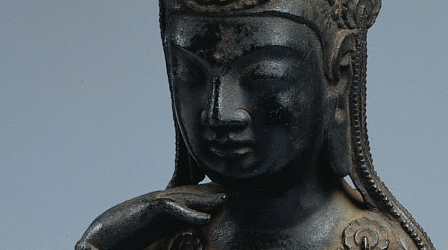Hermenuetics
Subscribe to this topic via: RSS
How Buddhists read and understand their literature.
Caution! Under Construction
Please be aware that this tag is still under construction and as such is missing information and may be changed or removed at any time. For all the content under consideration for this tag, see the “Hermenuetics” folder on Google Drive.
Table of Contents
Books (6)
Canonical Works (19)
Featured:
-
⭐ Recommended
You should neither approve nor dismiss that mendicant’s statement. Instead, having carefully memorized those words and phrases, you should …
-
I say it’s not possible to know, see or reach the end of the world by traveling. But I also say there’s no making an end of suffering without reaching the end of the world.
-
How does a person both make a hole and live in it?
-
Challenged by a brahmin, the Buddha gives a coy and cryptic response about the ending of conflicts. Venerable Kaccāna draws out the detailed implications of this in one of the most insightful and difficult suttas in the canon.
-
A faithful laywoman would rightly aspire: ‘May I be like the laywomen Khujjuttarā and Veḷukaṇṭakī, Nanda’s mother!’
See also:
Readings (28)
Featured:
-
⭐ Recommended
In early Buddhist logic, it was standard to assume that for any state of affairs there were four possibilities: that it held, that it did not, both, or neither. This is the catuskoti (or tetralemma). Classical logicians have had a hard time making sense of this, but it makes perfectly good sense in the semantics of various paraconsistent logics, such as First Degree Entailment (FDE).
-
⭐ Recommended
… so many warriors perished on the battlefield. The response of the arahants is truly astounding.
-
The monk Soreyya replies that his attachment is stronger for the sons of which he is the mother.
-
The origin story of the Licchavis, retold in two commentaries on Nikāya texts, has received some scant attention in the modern scholastic record, yet has usually been either cast aside as so much myth or has been recast in thematic or structural studies that align it with other tales of incest, foundling narratives, or origin stories of gaṇa-saṅghas. This article argues against those interpretations and offers a thorough rereading of the story as not only encoding a class hierarchy but also, in so doing, critiquing the Brahmanical class structure and the concept of svabhāva by birth.
-
Much as a soaking in good oil will prime a lamp’s wick for the lighting, miracle stories prepare the audience for the cultivation of potent emotions and resultant ethical transformation.
-
Contemporary Buddhist studies has been strongly affected by its origins in the Victorian era, when Western religious scholars sought to rationalize and historicize the study of religion. Modern Asian scholars, trained within the Western scholarly paradigm, share this prejudice. The result is a skewed understanding of Buddhism, emphasizing its philosophical and theoretical aspects at the expense of seemingly ‘irrational’ religious elements based on the direct experience of meditation practice.
See also:
Audio/Video (5)
Featured:
-
A detailed analysis of this difficult sutta highlighting the limits of concepts and the Buddha’s rhetorical genius.
See also:
